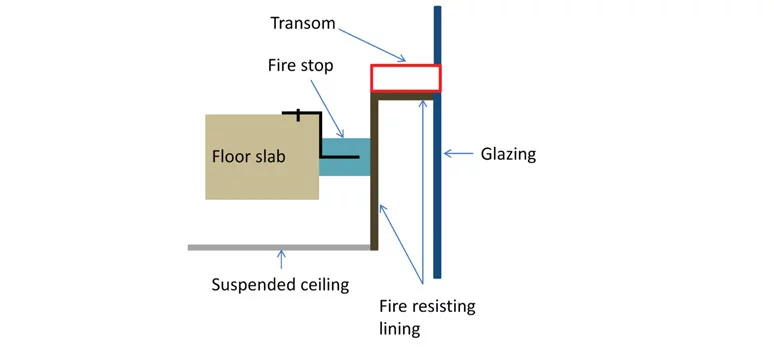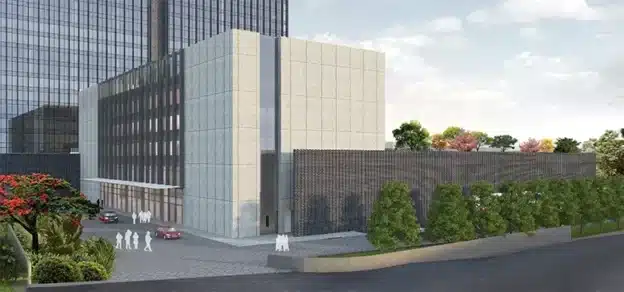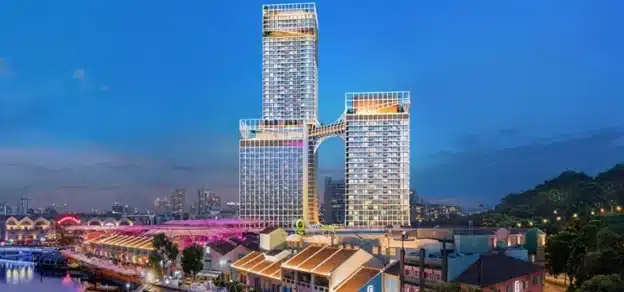The importance of façades with respect to Fire safety cannot be emphasised enough, especially in the context of the spate of fire disasters globally. Let’s consider the current scenario of urban architecture in India – crowded spaces, little or no awareness about Fire safety within occupants and add to this, the chaotic traffic that does little to ensure that external rescue operations are effected within quick time.
Now consider the majority of new constructions where the traditional brick walls with small window-to- wall ratios have been replaced by expansive glass, aluminium and stone façades. Fire safety façades, then become a pivotal aspect of design and final construction. Some of the important aspects are:
- Adequate checks to ensure that only noncombustible materials and fire-retardant materials are used.
- Horizontal and vertical firestops should be in place to check the propagation of fire within floors and vertically between floors.
- In case of openable windows, the monolithic toughened glass should be installed. Laminated panes should be avoided as these would be difficult to break if need be during fire.
- All openable windows should be clearly marked with a red triangle, visible from outside.
- All refuge areas (open or compartmentalised) should be provided with adequate ventilation though the façade, either through an open space or through openable panels.
Although these are just some basic guidelines, eventually the building location, type, size and its potential occupant density will demand additional fire-safety measures, ignoring which can pose a serious threat to the safety of its people. It is also important to note that façades are just one element to be considered for fire-safety, and a holistic conformance to all fire-safety requirements, both active and passive, will determine how safe a building actually is in the event of fire.
The new National Building Code (NBC) 2016 in Part 4: Fire and Life Safety also comprehensively outlines the important criteria and construction guidelines for Fire safety façades
PREVENTING FIRE SPREAD
As the fire incidents at Grenfell Tower, London and The Address in Dubai have demonstrated, use of combustible façade elements and lack of fire spread measures resulted in massive loss of life and property. This fire spread through the various floors in double-quick time, primarily through the façade. We need to learn from these disasters. Other incidents such as the recent fire in Beaumonde, Mumbai prove that the use of non-combustible façade products can greatly inhibit the spread of fire and give both people and fire authorities sufficient time for evacuation and fire dousing.
Highlighted below are some key parameters that define the performance of façade materials in the event of fire:
Materials used for cladding
Glass, aluminium composite panels, metal panels, fibre, and glass fibre reinforced polymers, stones and wood are some commonly used cladding materials. The combustibility and charring index of the cladding materials should be assessed during design and selection.
Building geometry and panel sizes
The façade geometry plays an important role in limiting or enhancing fire propagation. Horizontal projections act as flame deflectors and one larger panel sizes required larger deflectors. Typical U-shaped façade geometries could also fuel rapid fire spread.
The space between buildings
Fire can spread through building exteriors either through conduction (direct flame contact) or through radiation (if the radiation heat flux exceeds the combustion point of the cladding material of the adjacent façade). This is an extremely important point, especially in densely built Indian metro cities and requires additional protection such as the use of fire-rated glass walls instead of conventional glass walls.
Voids or cavities between the façade and the curtain wall
Voids spaces or cavities between the façade and the floors need to be completely sealed through the use of perimeter fire barrier systems. These systems typically consist of firestop sprays, smoke seals and rock wool insulation to ensure that the cavity is completely sealed and to stop the vertical spread of fire between floors, for the duration as required by the fire department or building codes.
IMPORTANCE OF USING FIRE RATED GLASS
Fire rated glasses are increasingly becoming the material of choice in creating fire-safe compartments, floors, façade and server-enclosures owing to their durability, ease of maintenance, aesthetics and transparency. Today, lobby glazings and office compartment partitions are almost entirely constructed of glazed partitions and glazed doors instead of the traditional steel and brick-and mortar constructions. Not only do they enhance the livability index for occupants by providing a sense of openness, but they also play an important role during fire rescue if they remain transparent during fire (transparency in fire conditions should be an indispensable part of fire rated glass selection).
Having said that, glazed doors and partitions typically cost higher than a traditional brick wall or a hollow metal door and in my experience, there have been several instances where fully glazed systems have been overlooked owing to their cost. Using alternate materials is an architectural and cost decision, however, at all times it should be ensured that the fire rating should in no way be compromised through the use of substandard or non-tested systems.
COMPARTMENTALIZATION IN STRUCTURE FOR FIRE SAFETY
Compartmentation within floor plates is an extremely critical part of passive fire safety in any construction and in no way should be bypassed or avoided. NBC 2016 has laid out comprehensive guidelines on the construction of compartments (Section D-21) and these compartments should have a fire rating of two hours. Irrespective of the cladding material used, these compartments should provide comprehensive safety and serve as a completely protected refuge area. In cases where the compartment walls have to be penetrated for electrical ducting or plumbing, adequate precautions such as collars and wraps should be used to ensure complete compliance with norms.
AWARENESS AND IMPLEMENTATION OF PASSIVE FIRE SAFETY
We are witnessing a very positive and upward trend with respect to both awareness and implementation of passive fire safety in building construction. This trend has resulted due to three factors: first, stricter requirements of the local fire department and nonissuance of No Objection Certificates in case the rules are flouted; second, popularisation of NBC 2016 through workshops and its comprehensive focus on fire safety and third, increasingly demanding corporations and occupants, which results in a positively competitive environment between developers to sell fully compliant structures to their tenants and buyers.
Having said that, there is also a great scope for improvement in compliance, as these trends are typically observed in tier 1 cities and in areas where real estate prices are high. It is the responsibility of all stakeholders in the construction space, developers, architects, consultants,engineers, material suppliers and even occupants ensure that adherence to these safety norms is respected and implemented. We should learn from the unfortunate and fatal fire disasters in buildings and should be collectively responsible for the protection of life and property when building new spaces for education, healthcare, living and working.














